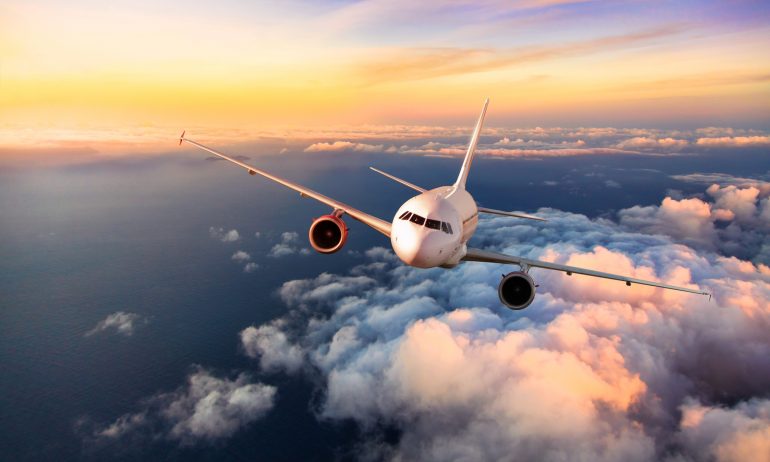Ask a Points Nerd: How Can I Factor Climate Change Into My Air Travel?

Many or all of the products featured here are from our partners who compensate us. This influences which products we write about and where and how the product appears on a page. However, this does not influence our evaluations. Our opinions are our own. Here is a list of our partners and here's how we make money.
If 2020 has done anything, it has made us question our assumptions. From big systemic problems to personal issues, everyone’s ideas about what matters have shifted to some degree.
The sudden decline in global air travel also carried a major silver lining: It contributed to a drastic reduction in carbon emissions. An article in the journal Nature estimated a global 17% daily reduction in carbon dioxide emissions in April 2020 compared to 2019. It turns out that climate sustainability might be possible — if we’re all willing to stop driving and flying so much.
Though changes in air travel weren’t wholly responsible for the drop in emissions, for me it raises a question I have long avoided: How can I both care about the future of our planet and travel around it? Is it even possible to be an environmentally conscious frequent flyer?
According to a report by the nonprofit International Council on Clean Transportation, U.S. “frequent flyers” — adults who took more than six trips by plane per year in 2017 — emitted a little over 3.4 tons of carbon annually. “If everyone in the world flew like American frequent fliers,” the report claims, “global oil consumption would increase by 150% and CO2 emissions from fossil fuel use by more than 60%.”
In other words: My financial freedom to fly whenever and wherever I want is a privilege — one that disproportionately harms the environment. If you read the news or Twitter you might think I’m “flight-shaming,” a term that has caught on (especially in Europe) as a means to peer-pressure frequent flyers into reducing their carbon footprints.
I’m not flight-shaming. You should travel as much and by whatever means you like. But if, like me, this pause in travel has given you pause about your own carbon footprint, here are some ways to reorient your travel priorities.
1. Travel better, not more
The number of miles flown per year acts as a badge of honor in the travel world, a way of signifying that one is a “serious” traveler. Yet this makes just as much sense as bragging about the length of your commute as evidence of your work ethic.
In other words: Flying is a means to an end. And the richness of the experience at your destination matters far more than how many destinations you visit or how far away they are.
I’ve written about mindfulness practice as a way of handling travel stress, and it’s also a great way to amplify the experience of a destination. In my experience, simply “being” at a cafe in Mexico City for a few hours can outweigh a breakneck sightseeing mission in terms of building memories and unique experiences.
Once air travel resumes, I’m hoping to focus more on the quality of my trips rather than the quantity.
2. Fly direct
If “traveling better” sounds too woo-woo for your taste, consider this ultra-practical solution: Avoid connecting flights. Yes, these flights are often cheaper, and sometimes earn more frequent flyer miles, but they also burn more jet fuel.
Why? The shortest distance between two points is a straight line — and unless your connecting city lies directly in the flight path to your destination (hint: it probably doesn’t), then you’re traveling farther than necessary.
It may not be sexy or virtue signal-able, but opting for direct flights when possible can make a huge difference.
3. Reward sustainable airlines
As government and customer scrutiny over the airline industry’s role in climate change comes into focus, some airlines are taking proactive measures to reduce their environmental impact.
Delta Air Lines, for example, recently committed $1 billion over the next 10 years to offset its carbon impact. They plan to do this through a combination of carbon offsets and fleet upgrades to newer aircraft, which are more fuel efficient.
I’m currently an Alaska Airlines loyalist, but I’m considering switching to Delta unless Alaska steps up its sustainability game. You can move the needle yourself by voting for airline sustainability with your airfare dollars.
4. Buy carbon offsets or contribute elsewhere
Carbon offsets are a way to mitigate the impact of flying, or any other fuel-intensive activity, by planting trees and leveraging other carbon-capturing techniques. You can buy these offsets from third parties, and some airlines like British Airways have even included the option to purchase them during checkout.
Buying these offsets is definitely better than doing nothing, yet some critics claim that they don’t address the root of the problem: unregulated airline fuel standards.
Consider researching and contributing to organizations seeking to address this underlying problem by demanding more accountability and action from the industry.
The bottom line
Traveling the world by air is an incredible privilege that has transformed my life for the better. Yet, as with any privilege, it’s important to question and investigate the impact it has. I’m taking these steps to reorient my own travel priorities when it’s safe to venture out again, and I encourage (not “shame”) you to consider doing so as well.
How to maximize your rewards
You want a travel credit card that prioritizes what’s important to you. Here are our picks for the best travel credit cards of 2023, including those best for:
Flexibility, point transfers and a large bonus: Chase Sapphire Preferred® Card
No annual fee: Bank of America® Travel Rewards credit card
Flat-rate travel rewards: Capital One Venture Rewards Credit Card
Bonus travel rewards and high-end perks: Chase Sapphire Reserve®
Luxury perks: The Platinum Card® from American Express
Business travelers: Ink Business Preferred® Credit Card
on Chase's website
1x-5x
Points60,000
Pointson Chase's website
1.5%-6.5%
Cashback$300
2x-5x
Miles75,000
Miles




